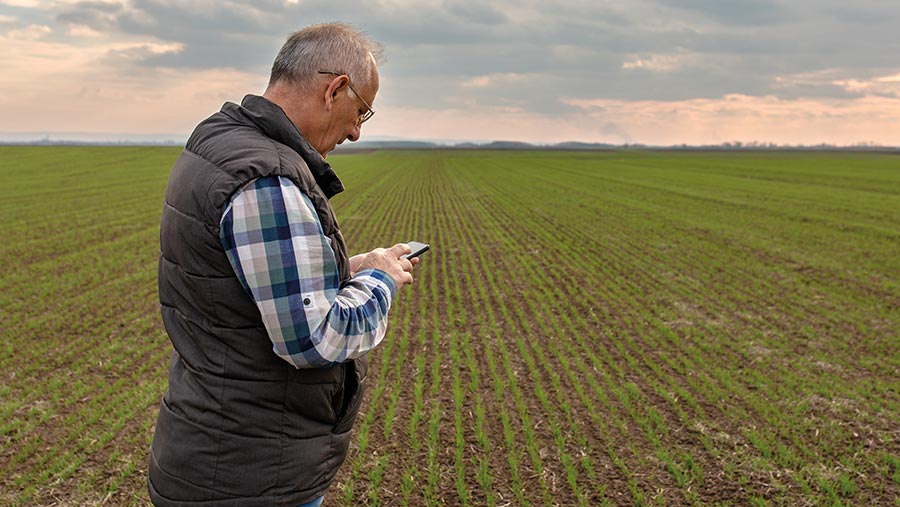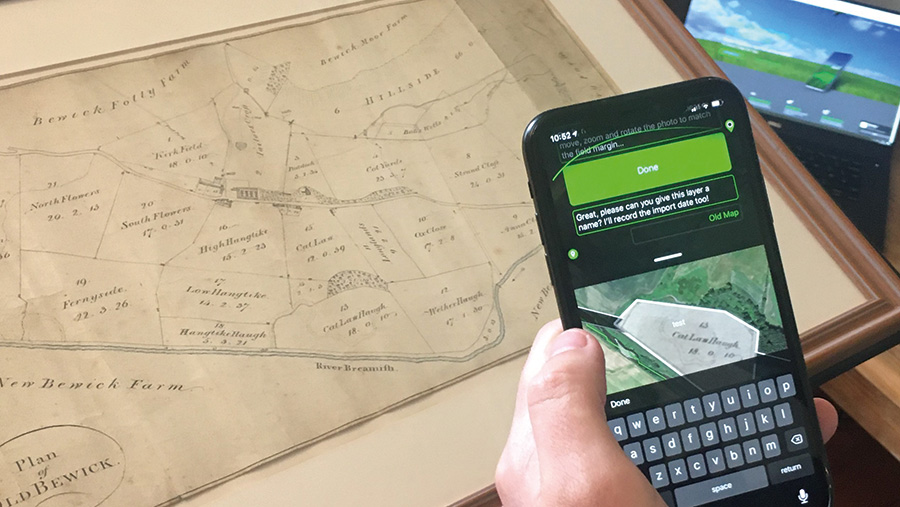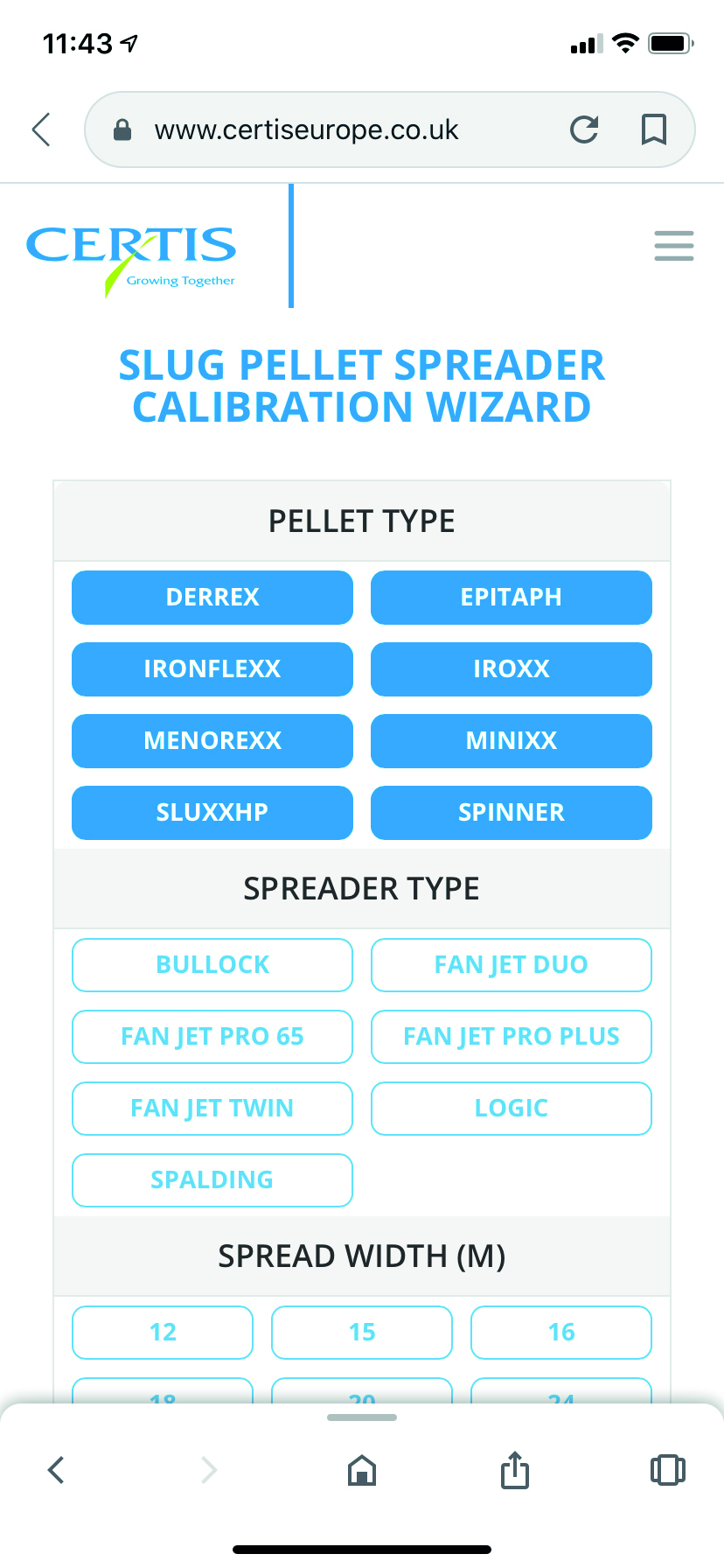Round-up of 9 arable apps that can benefit farmers
 © AdobeStock/Zoran Zeremski
© AdobeStock/Zoran Zeremski Whether it’s selecting which varieties to drill, using data to determine input timings or ensuring machinery and equipment is safe to use, there is a constant supply of new apps aimed at making arable farmers’ jobs simpler.
Here we round-up nine of the latest online and smartphone apps and look at how they can benefit arable farmers.
See also: Why wildflowers could cut aphid-spread viruses in potatoes
1. Hutchinsons’ Omnia climate prediction module
- Omnia Access – Free

© Hutchinsons’ Omnia
The new climate prediction module by Omnia uses weather data to forecast key growth-stage timings of crops to improve input efficacy and plan workloads.
Users are able to predict and alleviate crop stress so they can make informed and earlier decisions about spray thresholds to minimise pest and disease risk.
Nick Strelczuk, Omnia’s precision technology specialist, explains how virtual weather stations provide localised data on both historic and future weather and soil conditions, using a combination of ground-based stations, satellite imagery and complex modelling systems.
“Users can find data on soil temperature, soil moisture, solar radiation and wind speed, as well as a 10-day weather forecast, which is accurate to 1sq km,” he says.
The app’s crop modelling feature, powered by weather and degree day data, displays current and predicted development stages for wheat and barley crops on a sliding timeline.
This enables growers to identify the most accurate treatment timings, with high-risk periods highlighted to improve chemical input efficacy, while reducing the risk of resistance build-up.
The climate module is available for farmers to use for free, with Omnia Field Manager and Omnia precision upgrades available at a cost.
2. Skippy Scout
- £30/month

This unique app uses drone imagery to enable growers to identify wheat diseases up to five times faster than conventional crop walking.
Developed by technology pioneer firm Drone Ag, Skippy Scout aims to pinpoint diseases such as yellow rust and Septoria tritici earlier in a crop’s development.
The company’s founder, Jack Wrangham, says the app offers farmers and agronomists an opportunity to identify diseases more rapidly to prevent yield losses and improve quality.
“In minutes, a drone can take detailed images of multiple points in a field to identify early signs of common crop diseases, which is then sent to the user’s phone in real time,” he says.
Images are then used to identify the extent to which disease is affecting leaves, which can be shared with agronomists between visits, enabling users to follow a crop’s development more closely.
In addition to high-resolution images, the company is also developing artificial intelligence to interpret drone images, which will inform app users of what type of disease is potentially present.
3. Smart Farmer
- Free seven-day trial
- £495/year (+VAT)

Smart Farmer
Smart Farmer is a mobile- and web-based app that allows operators to ensure safe and well-maintained machinery, by recording pre-start checks online, which can be shared across the farm to all the workforce.
Developed by Marc Skivington, the app aims to provide a simple method to ensure the safe and optimum use of farm machinery, by creating a safe work environment.
The tool uses a unique traffic-light system to show the state of machinery, with an easy-to-understand indicator of the machine’s status.
Previous checks are instantly presented to users so they know the current state of the machine, with the app using QR codes to quickly identify machines.
This allows the operator to identify which machines are in use today and by who, with any potential issues being flagged up that require attention before the machine can be used.
In the event of an incident, the app can provide reports to show routine pre-start checks that were carried out in line with current industry standards.
4. Xarvio Field Manager
- Free for 2020
- Other functions available at additional prices

© Xarvio
Field Manager offers a new digital approach to grow crops and identify the risks of crop production early on.
From seeding to harvest, the app focuses on four components: field monitor, spray timer, zone spray and nutrient management to better inform farmers on their management decisions.
Users can receive field-zone-specific information, upload and compare maps for yield, nutrition, crop protection, growth regulators, and seeding.
They are also provided with detailed information on current weather conditions and hourly forecasts for fields, as well as up-to-date biomass maps of field zones, which identifies performance, based on satellite data.
Using the Nutrient Management feature and growth-stage modelling, the optimum nutrient demand and timing of crop inputs can be determined.
The spray timer and zone function enables users to protect crops and identify potential risks early on, with disease and insect alerts whenever there’s a change in risk status, while applying zone-specific variable application rates to ensure the right dose is applied at the right place.
New updates on the app now deliver enhanced insights into Leaf Area Index (LAI) satellite maps, providing more accurate variable-rate fungicide applications, while a new Expert View system shows key data for weather, disease risk, lodging, nutrition and growth stages.
Users are now able to share access and information with colleagues and advisers with a “CrossFarm Dashboard”, which provides an overview and comparisons across multiple farms.
5. AHDB variety tool
- Free

© AHDB
The new AHDB Recommended List online tool provides growers with an interactive way to sift through the many crop varieties on offer to identify the most suitable cultivars for their farm.
The online tool enables growers to select varieties that meet their individual criteria, such as protein content, and make comparisons of specific disease resistance and lodging ratings, while investigating regional performance and yield consistency.
AHDB research data analyst Bastiaan Brak says the tool enables growers to extract and analyse data easily, allowing them to make informed decisions based on the varieties’ yield and genetic performance.
At the heart of the tool is a new agronomic merit feature, which calculates the genetic potential of varieties for their different disease and lodging resistances.
The feature works by allocating a “weighting” importance to disease resistance and standing ability factors, where the variety’s overall agronomic score is calculated and displayed on a graph against yield.
Information on a variety’s yield consistency across different seasons and regions is also accessible, which is something many growers will rate highly when selecting varieties.
How a variety responds to fungicides can also be compared using the “treatment benefit” option, which looks at both treated and untreated trial data.
6. E-Planner
- Free

E-Planner app
E-Planner is a free, web-based tool that supports farmers in making decisions about where to target environmental management options, advising them on optimum areas to sow wildflower strips, grass margins, or plant trees.
The app shows maps of every British farm and all 2.4m fields using a colour-coded system of red, orange and blue to show the best sites for four key areas: pollinator habitats, resource protection, woodland creation and winter bird food.
E-Planner gives details of soil type, slopes, habitats and watercourses.
It is able to identify south-facing slopes and lighter soils, where pollinators will thrive, as well as highlighting slopes close to watercourses, suited for 6m or 12m grass margins or cover crops, to avoid water run-off.
The farm map on the app can pinpoint awkward field corners, where crop production is difficult and advise planting trees in these areas, and also detect where seed-bearing crops for winter bird food can be grown.
The idea is to model all data into weighted maps, showing suitability for the different environmental options, and present the results on a farm scale in the web-based tool.
These maps will be of the same resolution as those for precision farming systems used for variable input rate applications.
Users can simply click on their farm to see a map relating to the four parameters, with areas shaded from blue for the least likely to succeed, through to orange and red for the most suitable.
7. Calibration Wizard
- Free

© Certis
The Calibration Wizard app aims to improve accuracy of slug pellet applications, allowing operators to effectively set up uniform and precise pellet doses.
Developed by slug pellet manufacturer Certis, in partnership with SCS Spreader and Sprayer Testing, it reduces the time taken to calibrate equipment.
Users can enter information on their pellet product, applicator type, spread width and target application rate to generate data on optimal spread performance.
The tool recommends disc speed, feed rotor settings and aperture settings, along with expected bait point density, to provide operators with accurate applications.
Rob Foxall, SCS director, explains how the online tool is a big step in the right direction for the industry as the app provides specific data to a range of pellet products applied through different applicators.
“The app will help farmers maintain accuracy between professional checks and when switching between products of different sizes.”
The tool will also help users understand the baiting point densities that can be achieved with different rates of products and their suitability for different spread widths.
8. PGRO Pea and Bean Guide
- Free

© PGRO
The Processors and Growers Research Organisation (PGRO) Pea and Bean Guide app brings up to date agronomy guides and recommended variety lists into a handy online tool, which offers users a growth stage guide, seed rate calculator and an identification section.
It presents users with information and pictures of common pests, diseases and deficiencies, as well as descriptions to help identify issue and control strategies.
The app also enables growers and agronomists to submit and record reports of pests and diseases.
Users are able to select the crop type that they’re growing, create detailed reports and record the level of infestation or damage.
Photos can be added, and the app can also locate a user’s in-field location to provide regional data.
A new section is now available, specifically designed to record the incidence of bean seed fly larvae damage in crops.
This will provide growers with extra help controlling the pest, with an updated web-based app that helps map the distribution and timing of pest attacks.
9. Dewing Grain App
- Free

© Dewing Grain
The Dewing Grain App is designed to help arable farmers stay connected, source prices on commodities and make easier and faster commodity deals.
The app includes market reports and industry news, enabling users to stay informed with the latest real-time industry data analysis and insights, as well as having access to a range of podcast episodes.
With a commodity selling feature, farmers can sell a wide variety of commodities directly via the app, which includes wheat, barley and oilseed rape.
Users can also receive direct offer notifications to their phone, informing them on what Dewing Grain are looking to buy and at what price.

